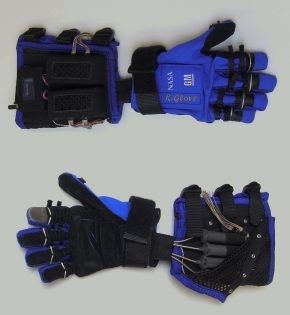NASA and GM Developing Robotic Glove for Human Use [Video]

NASA and General Motors (GM) are jointly developing a robotic glove. Astronauts and autoworkers can wear the gloves which should help them reduce the risk of stress injuries in their respective jobs.
The concept for the glove - K-glove or Robo-Glove - originated from NASA and GM's Robonaut 2 (R2) project which, last year, was responsible for launching the first humanoid robot into space.
Researchers, engineers and scientists from both organisations worked on the basis that some tools, common to both factory workers and astronauts, require prolonged and continuous operation. Under normal circumstances, this can result in fatigue for hand muscles. However, initial tests of the Robo-Glove suggest the wearer can hold a tool, comfortably, for longer periods.
"The prototype glove offers my spacesuit team a promising opportunity to explore new ideas, and challenge our traditional thinking of what extravehicular activity hand dexterity could be," said Trish Petete, division chief, Crew and Thermal System Division, NASA's Johnson Space Center.
"When fully developed, the Robo-Glove has the potential to reduce the amount of force that an autoworker would need to exert when operating a tool for an extended time or with repetitive motions. In so doing, it is expected to reduce the risk of repetitive stress injury," said Dana Komin, GM's manufacturing engineering director, Global Automation Strategy and Execution.
The two organisations have submitted a total of 46 patent applications for the R2... 21 of these are for the hand and a further four for the glove itself.
The first prototype was completed in March 2011.
Oceaneering Space Systems, the company that provided R2's skin, also produced the fabric for the glove. The current prototypes, which include electronics, an actuator and a small display for programming and diagnostics, weigh about two pounds. The third-generation prototype is nearing completion.
Check the video here....
© Copyright IBTimes 2025. All rights reserved.





















